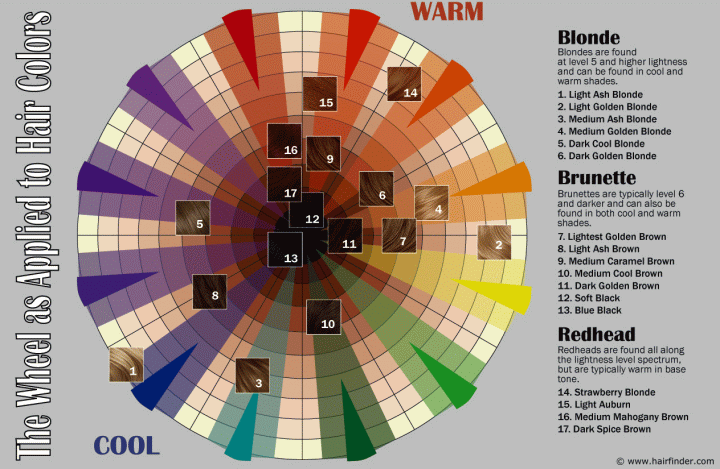How to Use the Hair Color Wheel

The Color Wheel and Your Hair Color
Any student of artistic endeavors has likely encountered the color wheel. The traditional color wheel displays the three primary colors: red, yellow, and blue, and the three secondary colors that are made from combining these primary colors: orange, green, and violet.
Some color wheels expand on this and include the tertiary colors (made by combining a primary and secondary color). These include red, red-orange, orange, yellow-orange, yellow, yellow-green, green, blue-green, blue, blue-violet, violet, and red-violet.
The purpose of the color wheel is to clearly illustrate the way in which the colors relate to one another. When colors are opposite one another on the color wheel, they are complementary colors. Complementary colors placed side by side will intensify the appearance of both colors, yet when any two complementary colors are combined in the proper proportion (as when applying hair color for color correction), they neutralize each other.
Analogous colors are those that are adjacent on the color wheel. Depending on the depth of the color wheel in question, you may be looking at comparing a primary color with its neighboring secondary color, or looking at very subtle shades as you get into fourth and fifth generation color combinations.
Analogous colors are generally compatible and can be made different by the lightness or darkness of the shade. Paired in comparison situations, analogous pairs coordinate well together. In blending analogous colors (such as in hair color) you can use an analogous color to intensify the hue of the hair's existing color.
The last color relationship we'll look at is monochromatic colors. This refers to colors that are all the same base color but of different hue and value. In comparative situations (such as in fashion and interior decor) monochromatic colors can add a sense of sophistication to the look. In combinatorial settings like hair coloring, using light, medium, and dark shades of a particular base color can create very flattering dimensional color effects.

The Color Wheel as it Pertains to Hair
When we look at hair color, the values of the traditional color wheel are too limited to explain the scope of the colors available. To more accurately represent the color, we need to add in the dimension of light level as part of the color wheel. The lightness level of a hair color is important in its classification in the three basic groups: blonde, brunette, and redhead.
Our hair color wheel utilizes the standard primary and secondary colors, as well as their tertiary combinations, but these base colors are overlaid on a gradient scale (from one to ten) of lightness levels. One is absolute darkest (black), and ten is lightest blonde. The base colors present overlaying the lightness levels help to demonstrate how to differentiate the myriad hair colors available.
Continue reading ...